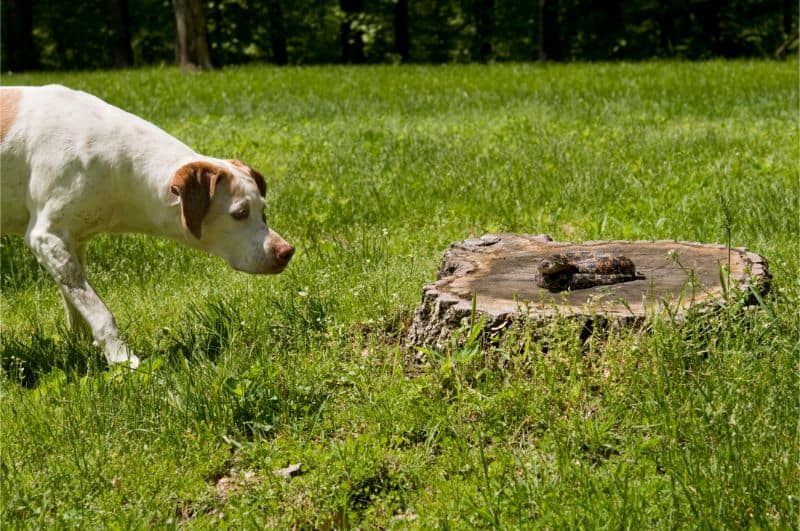Keeping Pets Safe From Snakes at Home

Californians are fairly well-versed at looking out for snakes while enjoying our state’s open spaces – especially while hiking or camping with our pets. Even though we know we share a close proximity (sometimes too close!) to various types of wildlife, it’s often a surprise to run into snakes in our own backyards. Fortunately, most snakes don’t pose a threat, but keeping pets safe from snakes remains a top priority this summer.
Equal Access
Snakes are important members of California’s ecosystem. Responsible for major pest-control, snakes deserve their place in the food chain. They reduce nuisance populations of rodents, insects, lizards, and amphibians. By virtue of their very healthy appetites, snakes can even minimize the spread of disease to humans via rodents.
Whose Side?
That being said, it can be incredibly shocking to cross paths with a rattlesnake steps away from your back door. That’s why pet owners should always be alert, especially during the months between March and November. By paying close attention to ambient temperatures you can keep pets safe from snakes, as they are known for heightened activity at dawn and dusk.
Survey the Scene
The more your familiarize yourself with the types of commonly encountered snakes in California, the better you can protect your pet from them. Knowing what to look for (even when camouflaged or obscured) will help reduce the risk of an attack.
Speaking of attacks, the majority of snake bites happen as a mechanism of self defence. It’s ideal to train your pet to avoid snakes and have them under voice command as much as possible.
Curiosity gets the best of many animals, and snake bites should be treated as a pet emergency. Even if you don’t know what type of snake has bitten your pet, it’s best to err on the side of caution and seek veterinary help immediately.
Keep Pets Safe From Snakes
To minimize the chance of snake encounters on your property, we recommend the following strategies:
- Keep grass neatly trimmed
- Reduce yard clutter and debris
- Clear out wood piles (if mice aren’t drawn to your property, snakes may not ever come by)
- Use small rocks instead of large, overlapping boulders in landscaping
- Fill in holes
- Seal cracks around the home’s perimeter
- Clear overgrowth
- Manage water features, pools, and other attractants
- Any sources of food
The Natural Way
There are many products available on the market to poison or deter snakes. They may be effective, but most contain dangerous chemicals harmful to pets and possibly the environment.
If you’d rather use natural products, try diluted 6-8 drops of cinnamon or clove essential oils into a gallon bucket. Spray areas where you’ve seen snakes. You can also soak cotton balls or fabric strips soaked with the solution and place them around your property. Because essential oils may be dangerous to pet health, proceed with vigilance.
Other ways Forward
Plant a marigold hedge around your property’s entrances (or areas likely for snakes to access) and consider fencing. While expensive, it’s likely to be the most effective method for keeping your pets safe from snakes.
Snake aversion classes are also a way to keep you and your furry friend safe. Here are two local organizations that offer Rattlesnake Aversion Training classes: Natural Solutions and Ma and Paw Kennel Canine Training Services.
If you have further questions or concerns about keeping your pets safe from snakes, Rocklin Ranch Veterinary Hospital is always here for you.

